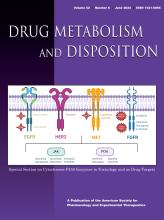Abstract
The accurate prediction of human clearance is an important task during drug development. The proportion of low clearance compounds has increased in drug development pipelines across the industry since such compounds may be dosed in lower amounts and at lower frequency. These type of compounds present new challenges to in vitro systems used for clearance extrapolation. In this study, we compared the accuracy of clearance predictions of suspension culture to four different long-term stable in vitro liver models, including HepaRG sandwich culture, the Hµrel stochastic co-culture, the Hepatopac micropatterned co-culture (MPCC), and a micro-array spheroid culture. Hepatocytes in long-term stable systems remained viable and active over several days of incubation. Although intrinsic clearance values were generally high in suspension culture, clearance of low turnover compounds could frequently not be determined using this method. Metabolic activity and intrinsic clearance values from HepaRG cultures were low and, consequently, many compounds with low turnover did not show significant decline despite long incubation times. Similarly, stochastic co-cultures occasionally failed to show significant turnover for multiple low and medium turnover compounds. Among the different methods, MPCCs and spheroids provided the most consistent measurements. Notably, all culture methods resulted in underprediction of clearance; this could, however, be compensated for by regression correction. Combined, the results indicate that spheroid culture as well as the MPCC system provide adequate in vitro tools for human extrapolation for compounds with low metabolic turnover.
SIGNIFICANCE STATEMENT In this study, we compared suspension cultures, HepaRG sandwich cultures, the Hµrel liver stochastic co-cultures, the Hepatopac micropatterned co-cultures (MPCC), and micro-array spheroid cultures for low clearance determination and prediction. Overall, HepaRG and suspension cultures showed modest value for the low determination and prediction of clearance compounds. The micro-array spheroid culture resulted in the most robust clearance measurements, whereas using the MPCC resulted in the most accurate prediction for low clearance compounds.
Footnotes
- Received December 22, 2023.
- Accepted March 19, 2024.
This work received supported from the healthcare business of Merck KGaA (Darmstadt, Germany).
L.C.P., K.G., and C.P. were employed by the healthcare business of Merck KGaA (Darmstadt, Germany) when this study was conducted. V.M.L. is the co-founder, CEO, and shareholder of HepaPredict AB as well as a co-founder and shareholder of Shanghai Biotechnology, Ltd.
↵1 Current affiliation: Pharmaceutical Research and Early Development, F. Hoffman La Roche AG, Basel, Switzerland.
↵2 Current affiliation: Department of Drug Metabolism and Pharmacokinetics (DMPK), Bayer Healthcare, Wuppertal, Germany.
↵
 This article has supplemental material available at dmd.aspetjournals.org.
This article has supplemental material available at dmd.aspetjournals.org.
- Copyright © 2024 by The American Society for Pharmacology and Experimental Therapeutics
DMD articles become freely available 12 months after publication, and remain freely available for 5 years.Non-open access articles that fall outside this five year window are available only to institutional subscribers and current ASPET members, or through the article purchase feature at the bottom of the page.
|







